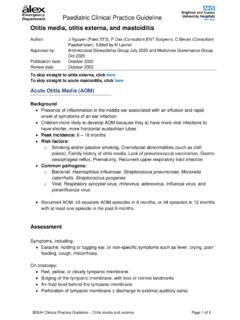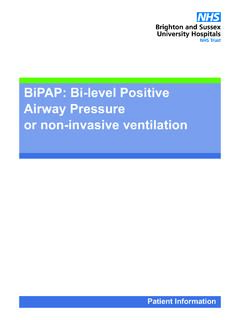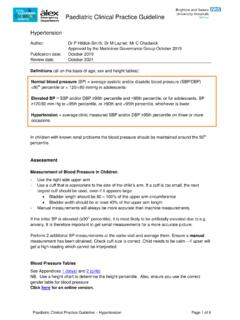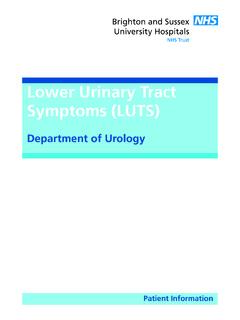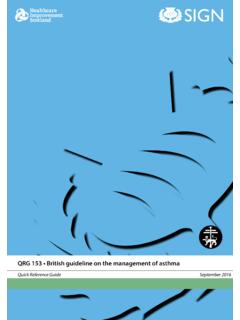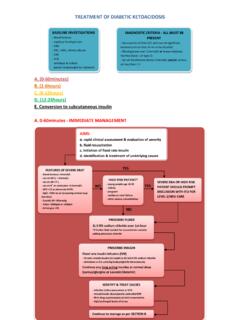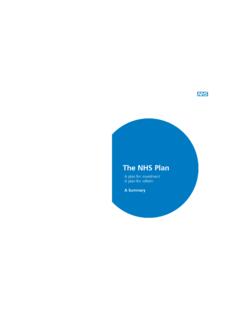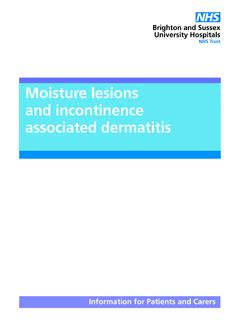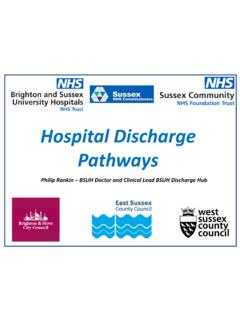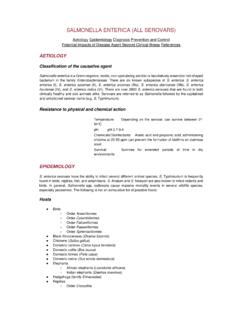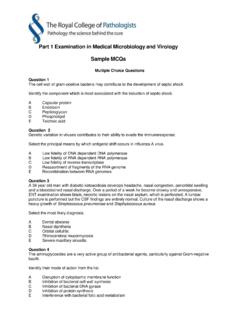Transcription of Paediatric Clinical Practice Guideline Lymphadenopathy …
1 Paediatric Clinical Practice Guideline Lymphadenopathy and Lymphadenitis Author: David Lawrence, Jane Ding, Katy Fidler, Miki Lazner, Catherine Wynne Publication date: April 2017 updated from September 2014. Review date: April 2019. Skip straight to lymphadenitis Guideline Background Most Lymphadenopathy is due to benign self-limited disease, such as viral or bacterial infection Lymph nodes < 1cm are normal in children aged < 12 years. Axillary nodes up to 1 cm and inguinal nodes up to cm also usually normal. If swelling is near the jaw line consider a dental infection will need referral to Max- Facs, antibiotics, and OPG x-ray. See dental infections Guideline . Supraclavicular nodes of any size at any age warrant further investigation Definitions Generalised Lymphadenopathy : Lymphadenopathy : enlarged lymph lymph nodes enlarged in 2 or more node(s). LN > 2cm have increased chance non-contiguous areas of being caused by serious pathology.
2 Localised Lymphadenopathy : lymph nodes enlarged in only one area Lymphadenitis: enlarged lymph node that is due to an inflammatory / infective process; usually warm, tender, erythematous +/- systemically unwell Acute Lymphadenopathy : < 2 weeks Subacute Lymphadenopathy : 2 6 weeks Chronic Lymphadenopathy : > 6 weeks Aetiology See endnotes for a quick guide to infections. Timing Symmetry Common Less common Lymphadenitis staph aureus and group GBS (age 3 Kawasaki Unilateral A strep 7 wks) Malignancy Newborn: staph aureus Anaerobes LCH*. Acute Viral URTI adenovirus, influenza, RSV CMV LCH*. Bilateral Group A strep (age >3yrs) Malignancy EBV. Non-tuberculous mycoplasma (age <5yrs) Toxoplasmosis LCH*. Unilateral Cat scratch disease TB. Malignancy lymphoma, leukaemia Chronic EBV Toxoplasmosis TB. Bilateral CMV HIV LCH*. Malignancy lymphoma, leukaemia *LCH = Langerhans cell histiocytosis BSUH Clinical Practice Guideline Lymphadenopathy and Lymphadenitis Page 1 of 5.
3 Paediatric Clinical Practice Guideline Management flowchart: Near jaw line? Enlarged lymph node Consider dental infection. See dental infections Guideline History / examination Normal / Unexplained reactive Suggestive of a diagnosis EBV, CMV, cat-scratch disease, toxoplasmosis, HIV, Reassure atypical mycobacteria and FBC with film, CRP, LFT, LDH, Safety-net Negative ESR, monospot Serology: EBV, CMV, ASOT. Specific testing and save serum Positive CXR; Consider USS of node Strong possibility of Discuss with Consider 2 weeks of oral malignancy Consultant or co-amoxiclav and review Dr Fidler 2-4 weeks by GP or RACH. Discuss with CED, COW or clinic Consultant No diagnosis same day and Clinical concerns persist Discuss with Dr Wynne or Dr Davidson to consider biopsy of most Assessment abnormal node History ask about: Characteristics of lymph node onset, size, duration, pain, distribution Recent infections sore throat, earache, rash Constitutional symptoms fever, night sweats, weight loss Ill contacts Recent travel and exposure to TB.
4 Food unpasteurised milk, undercooked meats Immunisation - BCG. Pets most importantly cats Sexual history in adolescents BSUH Clinical Practice Guideline Lymphadenopathy and Lymphadenitis Page 2 of 5. Paediatric Clinical Practice Guideline Examination Lymph node size, site, colour, tender/non-tender, mobile, distribution, fluctuant, consistency Examine all lymph nodes regions Head and neck oropharynx, conjunctiva, ears, scalp Abdomen hepatosplenomegaly Skin rashes, pallor Investigations First line o Blood tests 1. FBC, blood film, ESR, CRP (inflammatory markers usually raised in malignancy), LFT, LDH (can be useful if very high or normal), monospot. Add blood culture if febrile. 2. Serology EBV, CMV, ASOT and save serum 3. Consider HIV, toxoplasmosis, B henselae (Cat scratch) serology based on consideration of immunosuppression and risk o CXR if concerned about malignancy or TB.
5 O Ultrasound of node - may be used to diagnose abscess. Discuss with Radiologist prior to requesting. Second line: o Mantoux test Done in clinic Mon / Wed by TB Nurse. o Quantiferon test blood test done Mon Fri 9 am 4 pm (must be in lab before 4pm). o Consider biopsy discuss with Dr Davidson, Dr Fidler or Dr Wynne as well as ENT or general Paediatric surgeon. If biopsy is performed locally, the samples must be sent for microbiology, mycobacteria and histopathology. It is important to ensure a clear follow up plan is made to review child with results. BSUH Clinical Practice Guideline Lymphadenopathy and Lymphadenitis Page 3 of 5. Paediatric Clinical Practice Guideline Management (see pathway). **If you think a patient needs a biopsy, d/w Dr Wynne / Dr Davidson**. **If they need TB investigation, d/w Dr Katy Fidler or Respiratory Team**. 1. Acute usually reactive Lymphadenopathy secondary to clear pathology acute tonsillitis / otitis media / eczema flare OR lymphadenitis.
6 Consider malignancy. Treat underlying cause. Management of lymphadenitis a) Severe massive Lymphadenopathy , systemically unwell (fever, vomiting), evidence of abscess formation. Admit co-amoxiclav Consider USS (discuss with Radiology) and Surgical referral for abscess . fluctuance / persistence of fever despite oral antibiotics b) Mild Oral co-amoxiclav GP follow up 2 days Oral antibiotics can have limited penetration into lymph node and take some time to work consider if no resolution of fever 48 hours 2. Sub-acute likely secondary to recent infection. Must consider malignancy / serological disease / mycobacterium Investigate - bloods and CXR. If unexplained, consider course of oral co-amoxiclav for 2 weeks and arrange follow up with GP or at RACH to ensure resolution d/w CED Senior doctor, COW or Consultant in clinic depending on where patient is seen. Safety-net for malignancy rapid growth of nodes, systemic upset (night sweats /.
7 Fever / weight loss) or signs of SVC obstruction. 3. Chronic rule out malignancy or mycobacterium Benign looking Lymphadenopathy : o Investigate - bloods and CXR. o Safety-net for malignancy rapid growth, systemic upset or signs of SVC. obstruction. Bigger nodes not obviously infected: o Investigate - bloods and CXR. Consider ultrasound of node (discuss with Radiology prior to requesting). o Consider course of oral co-amoxiclav for 2 weeks and arrange follow up. Safety net for malignancy rapid growth, systemic upset or signs of SVC obstruction. BSUH Clinical Practice Guideline Lymphadenopathy and Lymphadenitis Page 4 of 5. Paediatric Clinical Practice Guideline Features which may prompt a lymph node biopsy in a child with peripheral Lymphadenopathy . (King D et al. Arch Dis Child Educ Pract Ed 2014;99:101-110). Notes: Quick guide to infections Infection Common Clinical features Anaerobes Lymphadenopathy , periodontal disease Brucellosis Lymphadenitis, Fever, sweats, malaise, weight loss, ingestion of unpasteurised milk, exposure to cattle/sheep/goats Cat scratch Tender, axillary / cervical / submandibular / epitrochlear node, history of cat scratch/lick in previous 2 weeks (90%), possible papule at site CMV Fever, malaise, hepatosplenomegaly (occasional), older children EBV Tonsillopharyngitis, splenomegaly (>50%), fever, malaise, older children, posterior cervical and / or generalised nodes.
8 GAS + Staph aureus Clinical features not useful in distinguishing the two, recent URI or impetigo, node 3-6cm, 25-33% suppurate and fluctuant GBS Cellulitis-adenitis syndrome, febrile, irritable, poor feed, submandibular, node with overlying cellulitis, bacteraemia common. Exclude concurrent meningitis in neonates. HIV Recurrent bacterial infection, opportunistic infection, fever, diarrhoea, encephalopathy, failure to thrive, hepatosplenomegaly, generalised Lymphadenopathy . Kawasaki Conjunctivitis, skin peeling on hands, diffuse rash, strawberry tongue, fever, single non-tender non-purulent node NTM Signs are very characteristic, submandibular (87%) and preauricular/parotid (9%), mostly unilateral ( ), violaceous discoloration of overlying skin, tender, rubbery Syphilis Rash, fever, malaise, anorexia, weight loss, hepatomegaly, LN near site of chancre or generalised.
9 Epitrochlear LN. Toxoplasmosis Mostly asymptomatic, myalgia, fatigue, fever, splenomegaly, maculopapular rash, cat exposure, ingestion of partially cooked meat Viral reactive Diffuse non-tender nodes, may persist for weeks, especially ENT- related. BSUH Clinical Practice Guideline Lymphadenopathy and Lymphadenitis Page 5 of 5.
